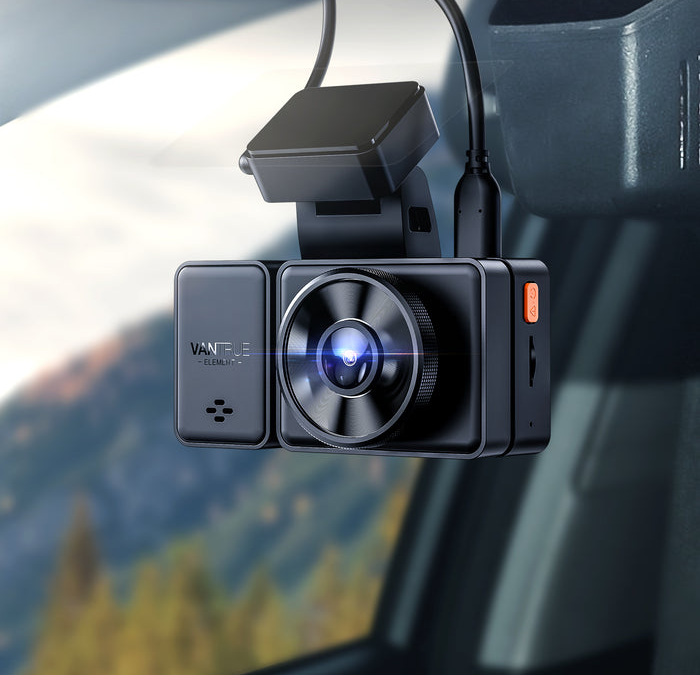In today’s world, having a dash cam in your vehicle has become increasingly common. These devices provide a sense of security while driving and are important tools for recording incidents on the road. If you own dash cam or are considering one, you’re likely wondering where the safest and most effective place to install it is. This guide will help you identify the optimal placement for your dash cam, ensuring you capture the best footage possible while keeping your vehicle’s aesthetics intact.
Dashcam: Optimal Placement for Maximum Safety and Clarity
When it comes to dash cam placement, every detail matters. You want to capture clear video footage of the road and ensure the dash cam does not obstruct your view while driving. Here are some best practices for placing your dash cam in your vehicle.
1. Mounting Location: The Windshield
The most widely recommended location for mounting your dash cam is on the windshield, specifically behind the rear-view mirror. This position offers an unobstructed view of the road ahead while keeping the camera out of your direct line of sight. Here’s why this spot is preferred:
- Uninterrupted View: Mounting the dash cam high on the windshield ensures a clear field of vision. It captures significant road details and surrounding activities, giving you the best opportunity to document incidents.
- Protection from Elements: Positioning your dash cam behind the rear-view mirror helps shield it from rain and direct sunlight, which can affect recording quality.
- Legality: Many jurisdictions have regulations regarding dash cam placement. Mounting it in this location typically keeps you compliant with local laws.
2. Stability and Security
Once you’ve chosen the windshield as your mounting location, the next step is ensuring your dash cam is securely installed. A dash cam that shifts or vibrates while driving can result in shaky footage or, worse, a complete loss of recording during critical moments. Here are some tips for maintaining stability:
- Use Proper Mounts: Most dash cams have a mounting bracket or adhesive tape. Ensure you’re using these tools correctly, as they are designed to give your dash cam a stable hold.
- Check for Vibration: Take your vehicle for a short drive after installation. Observe whether the dash cam stays in place and captures stable footage. If you notice excessive movement, consider readjusting the installation.
3. Cable Management
After securing your dash cam, running the power cable is the next consideration. A well-organized installation looks clean and minimizes the risk of cable snags that can distract you while driving. Follow these steps for a neat setup:
- Optimal Routing: Instead of dropping the cable directly from the dash cam to the power outlet, run it along the top of the windshield, down the side near the glove box, and then beneath the dashboard. This method keeps the cable out of the way and ensures it won’t interfere with your driving.
- Hide Excess Cable: If you have extra cable length, tuck it neatly along the dashboard’s edges.
4. Considerations for Multi-Camera Dash Cams
If you have a multi-camera setup, placement becomes more complex. You’ll want to ensure that each camera captures the intended angles without obstructing your view. For example:
- Front and Interior Cameras: If your dash cam includes an interior camera, consider mounting it above the rearview mirror or in the middle of the windshield, facing inward. This position will allow for effective recording of passengers and the interior environment.
- Rear Cameras: If your dash cam has a rear camera, consider mounting it near the back window to ensure it captures any incidents behind your vehicle.
5. Familiarize Yourself with Local Regulations
Before finalizing your dash cam placement, it’s a good idea to familiarize yourself with local regulations regarding dash cam use. Some jurisdictions may have specific guidelines about where devices can be mounted on the windshield. By adhering to these regulations, you can avoid potential fines and ensure the legality of your dash cam setup.
6. Testing and Adjustments
Once you’ve installed your front and rear dash cam, take some time to test it. Drive around your neighborhood or along a quiet road to evaluate the footage’s quality. Look for any signs of obstruction in the view and check for stability. If necessary, adjust the angle or position to optimize your recording capabilities.
The Benefits of a Properly Installed Dash Cam
Investing in a dash cam and installing it correctly comes with numerous benefits beyond simply having a recording device in your vehicle. Here’s what you can gain from a well-placed dash cam:
- Peace of Mind: Knowing that you have a reliable recording device can ease anxiety while driving, especially in unfamiliar areas or during adverse weather conditions.
- Evidence in Case of Incidents: If you’re involved in an accident or witness a road incident, having clear footage can serve as essential evidence for insurance claims or legal proceedings.
- Deterrent Against Theft: A visible dash cam can deter potential thieves or vandals from targeting your vehicle, knowing they are being recorded.
Maximize Your Safety
Choosing the right location for your dash cam is essential for maximizing its effectiveness. By following the guidelines outlined in this article, you can ensure that your dash cam is positioned to capture clear, uninterrupted footage while keeping your driving experience safe and compliant with local laws. Don’t wait any longer to enhance your vehicle’s safety with a dash cam.

